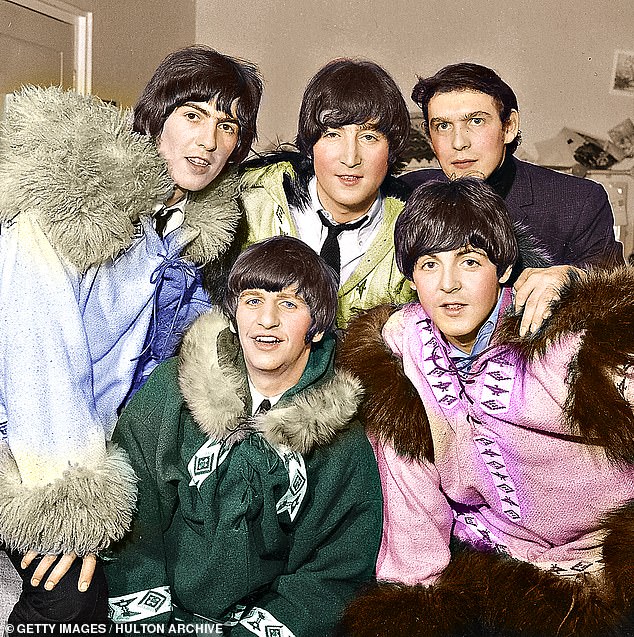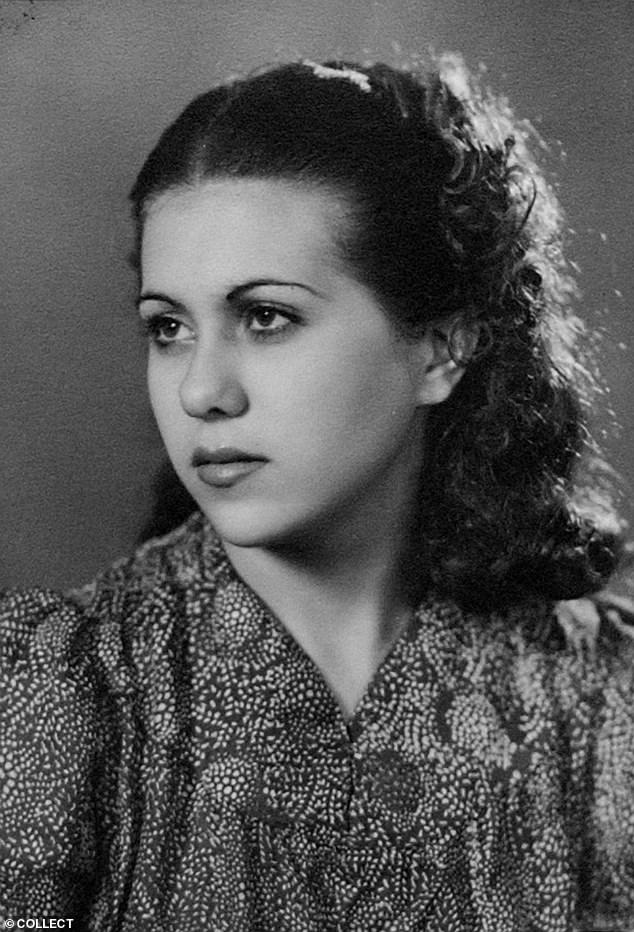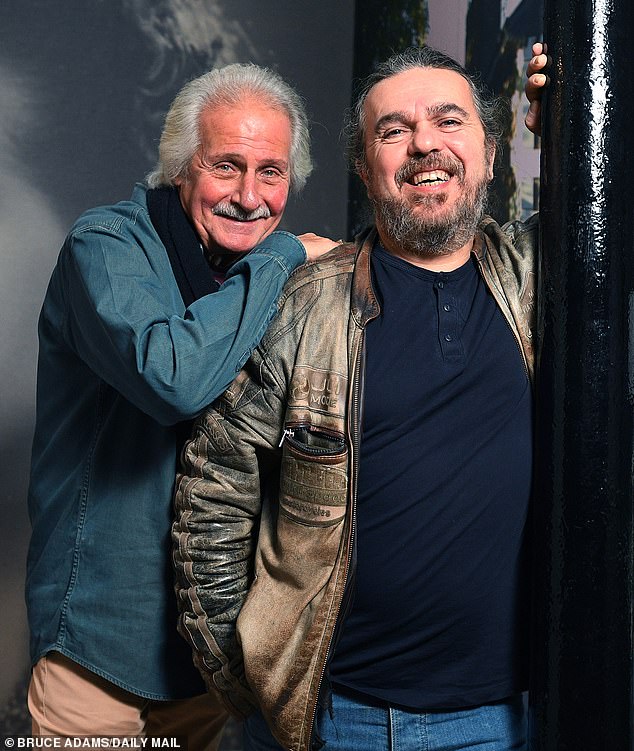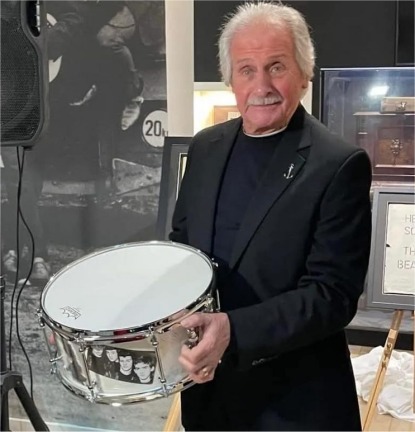Bill Hillman Tracks
THE BEATLES IN HAMBURG
1960-1962
Photos by Bill Hillman accompanied by information
compiled from personal interviews and various Beatles Bios and Web Refs
www.hillmanweb.com/BEATLES
www.hillmanweb.com/BEATLES/best.htmlPETE BEST 1. MONA BEST
Mona Best gave the Fab Four their break, her son was the drummer they fired and she had a love child with the band's manager. But only decades after can the scandalous secret of the 'mother' of the Beatles be told
Mona Best, of Liverpool, was the mother of the Beatles' first drummer Pete Best
She gave the band their first bookings in a tiny club set up in her basement
She had an affair with Neil Aspinall, before he became the band's manager
Their secret love child was called Roag and he has now told of his mother's lifeBy David Leafe for the Daily Mail
12 December 2018 ~ https://www.dailymail.co.uk/femail/article-6489647/Mona-Best-gave-Fab-Four-break-love-child-bands-manager.html
Everyone knows the story of the Beatles, the four mopheads from Liverpool who were talent-spotted at the Cavern Club and catapulted to global fame by manager Brian Epstein.
But not everyone knows that long before they ever met Epstein, the Beatles already had a formidable force in their life in the form of housewife Mona Best, mother of the band's original drummer Pete Best, the man often described as 'the fifth Beatle'.
It was Mona who gave the band their first bookings in the tiny club she set up in the basement of her home in Liverpool, and Mona who became their first, unpaid manager.
Mona Best was the mother of Pete Best, the Beatle's original drummer.Pictured, Neil Aspinall (top right) who had a love child with Mona and the Beatles Mona Best was the mother of Pete Best, the Beatle's original drummer.
Mona (pictured) was the Beatles first manager and gave the band its first bookings in a tiny club set up in her basement
More than that, she also had an affair with Neil Aspinall, the school friend of Paul McCartney and George Harrison, who became one of the most trusted members of The Beatles' inner circle as their roadie, fixer and later their business manager.
He fathered her secret love child, a son named Roeg born in 1962, and it's thanks to him that the story of Mona Best — the woman who can lay claim to be the 'mother of the Beatles' — can now be fully told.
I met Roag at the Magical Beatles Museum, five-storeys of memorabilia he has recently opened on Mathew Street diagonally opposite the Cavern Club.
Among the 1,200 remarkable exhibits he has assembled through his close links to the band are a pair of round NHS spectacles which had belonged to his grandmother — and which became a key influence on John Lennon's image in later life.
According to Best family lore, on discovering that Lennon, then 19, had carved his name into the wall of the Casbah, Mona's basement night club, she gave him 'a crack around the back of the head'.
'It sent his glasses flying on to the floor and then he stood on them,' says Roag.
This left the myopic superstar-to-be wondering how he was going to find his way home that summer's day in 1959 — until Mona came up with a solution.
'That's how John Lennon ended up wearing my grandmother's glasses for the next month,' laughs Roag.
His collection of previously unseen letters, photographs, and diaries are testimony to just how much Mona, an exotic beauty in her youth, was a driving force in the Beatles' early success.
Born in India in 1924, she was of Irish parentage and her father was a colonel serving in the Bengal Lancers.
A free spirit, with olive skin and amazing long jet-black hair, she broke many hearts. But it was Johnny Best, a major posted to India during World War II, who wooed and won her.
Mona had an affair with Neil Aspinall, before he became the band's manager.Mona had an affair with Neil Aspinall, before he became the band's manager. Pictured, the Beatles including Pete Best on drums
He hailed from a family of wealthy Liverpool boxing promoters, but when he and Mona returned to England in 1945, with young sons Peter and Rory, they could not agree where to settle and moved from rented house to house.
Fed up of him constantly overruling her, Mona decided to raise some money of her own. In 1954, she pawned all her jewellery and gambled the cash on a horse called Never Say Die, a 33-1 outsider in that year's Derby. She'd never heard of the jockey, an unknown 18-year-old called Lester Piggott, but the horse became the first of his record nine Derby winners.
Three years later, Mona spotted the derelict headquarters of the former Conservative Club in West Derby, a quiet, tree-lined residential suburb of Liverpool. Johnny insisted the house, with its long drive and orchard would cost too much to renovate. Mona ignored him and her winnings gave Number 8, Hayman's Green, its unique place in Beatles history.
Johnny's wishes were similarly overridden two years later when Mona, inspired by a TV programme she'd seen about the a rock 'n' roll cafe in London, decided to recreate something similar for her teenage sons, then 17 and 14, and their friends.
She opened a coffee bar-cum-club in the cellar of the house. 'Johnny Best said 'over my dead body' but work began the next day,' Roag says. For the opening night in August 1959, Mona recruited a rock 'n' roll combo called The Quarrymen, then consisting of John, Paul, George and a guitarist named Ken Brown.
They became regulars and after each Saturday night show, there was a party upstairs in the family quarters when Mo would hold court with the youngsters.
She would often talk about the Eastern philosophy she'd encountered in India, inspiring in the young George Harrison an interest which later saw him encouraging The Beatles' involvement with the Maharishi Mahesh Yogi.
'George used to follow her around the house asking her to repeat her stories,' says Roag. 'And that reached such proportions that if she saw him she used to duck into her room because she was fed up of talking about India.'
That initial residency was, however, short-lived. By October, John, Paul and George were arguing with Mona over money and refusing to play at the Casbah any more. Ken Brown decided to set up a new band there with Mona's eldest son Pete as drummer, but there were clearly no hard feelings between the boys.
When John, George and Paul — calling themselves The Silver Beatles — left Liverpool to try their luck in Hamburg's vibrant music scene in August 1960, (with John's art-school friend Stuart Sutcliffe as their bassist), they also took Pete Best with them as drummer. And on their return that December their first UK concert as The Beatles was at the Casbah.
Their slick musicianship, honed through playing seven hours a night in Germany, began to attract audiences from across the North West, packed in so tightly that anyone who needed the lavatory had to be physically picked up and passed back over the heads of the crowd.
As word of this hot new band spread, Mona proved a determined force as their promoter.
'She did everything in the dining room at Hayman's Green, sitting at a big round table with her papers spread all over it, and in between talking to all the different venues, she'd be on the phone to her bookies,' says Roag. 'She never gave up the gambling and she was very good at it.'
In her notebooks now on display at the museum, Mona jotted down ideas for new venues they might play and designs for flyers. The boys — none of whom were older than 20 — held her in awe.
'I was used to these wild, beautiful Beatles,' Stuart Sutcliffe's girlfriend Astrid Kirchherr once recalled. 'When Mona was about they were quite different, quieter, good boys. You could see straight away that they had a lot of respect for her.'
It was Mona who got the Beatles their first booking at the Cavern Club. She also bought them their first means of transport, a secondhand Ford van, the receipt for which is part of the exhibition.
The job of driving it fell to Neil Aspinall, then an accountancy student and a friend of Pete Best who was lodging with the Best family. Mona and her husband Johnny had been drifting apart for some time, and although Aspinall was 17 years her junior, he and Mona began an affair which led to an ultimatum from her husband.
'He said, 'I know you've been seeing this young fellow in the club and you've got to choose — it's me or him,' says Roag. 'And Mona chose my Dad so Johnny agreed to move out.'
Soon afterwards, Mona fell pregnant with Roag, but she continued to promote the Beatles who, even as their success grew, would hang out at Hayman's Green, and it was there that they listened to their first national broadcast (pre-recorded) on the large radiogram in the living room.
'We were jumping about,' Pete Best later recalled. 'We were not just recording stars, but radio stars.'
By then The Beatles were being professionally managed by Brian Epstein, something which Mona fully supported.
'She wanted the Beatles to be a success and if her having to stand down meant that they would go further up that ladder, then she was happy to step out of the way,' says Roag.
Mona had much else to distract her at that point. In May 1962, her own mother died of cancer leaving her 'shattered' and the following month she closed the Casbah for good.
Roag was born in July and the next month Pete was dropped as drummer by the Beatles to be replaced by Ringo Starr, just as they were about to make it really big.
No explanation has ever been given and while Pete Best has consistently maintained in interviews that he bears no grudges, letters of support sent at the time to him —and which are now in the museum — reveal how those around him felt about it.
One was written to Mona by the mother of Alan Caldwell, the lead singer in the band Rory Storm and the Hurricanes, the band in which Ringo was playing before he was poached by The Beatles. In it, Mrs Caldwell talks of the 'lousy trick done to Pete'.
'I told Ringo and Paul that they would never have any luck, that everyone was disgusted with the whole thing,' she wrote. 'I do hope Pete feels better about it now.'
As for Mona, she made her own views clear within family circles.
'She felt betrayed,' says Roag. 'She'd say things like 'I did so much for those boys and that was how they repaid me.' But my Dad [Neil] was still working for them so she had to put her feelings to one side.'
Mona pulled this off quite successfully, judging by the number of presents the Beatles gave her over the years.
The museum boasts a boomerang from Paul following a visit to Australia, while John gave her the trophy that featured on the cover of their ground-breaking album, Sgt. Pepper's Lonely Hearts Club Band.
This was to thank Mona for lending him her father's war medals, which are seen pinned to his chest on the same cover and which are now on display in the museum, too.
That was one of the last times Mona was in touch with the Beatles, because the following year she and Neil split up. Roag, who was six, attributes this to both the age difference and the demands of his father's job.
'People ask me how I feel about my Mum and Dad splitting up, but with the age difference between them, and him being on the road with the greatest rock and roll band in the world, I'm surprised it lasted as long as it did.'
Later that year, Neil married Suzy Ornstein, the daughter of a film executive he'd met on a Beatles' film.
Mona, who went on to have a 16-year relationship with a painter and decorator who had been a member of the Casbah and was 20 years her junior, initially tried to deny Aspinall access to Roag.
However, she eventually relented and they went on to have what Roag describes as a normal father-son relationship, albeit one lived in two quite different worlds.
Most of the time Roag was with Mona at Hayman's Green, a normal Liverpool schoolboy, but then there would be visits to his father's luxurious house in London where, as the Beatles' fortune, and Aspinall's share of it, grew, there were vintage Bentleys, Aston Martins and Porsches on the drive.
One of his proudest possessions was a guitar strummed by George Harrison during a session at his mansion in Henley, with 16- year-old Roag, an aspiring drummer, playing alongside.
'I'd gone there with my Dad, and George said 'you get on drums, Roag' and we just jammed out a load of rock 'n' roll numbers.
'It was a real fun day and it was only when other people started asking me about it that I twigged that our family wasn't like other people's and that having a jam session with George wasn't what other teenagers got to do.'
Aspinall remained close to the Beatles throughout his life. When he was dying of lung cancer in 2008, a year after retiring as chief executive of the Beatles' company Apple Corps, Paul McCartney flew to New York to be at his bedside.
Like his half brother Pete, Roag worked as a civil servant for years, but both brothers have now returned to the music world which was so much a part of their earlier lives.
Pete Best pictured with half brother Roag at the new Beatles Museum 'Magical History Museum' open in Liverpool city centrePete Best pictured with half brother Roag at the new Beatles Museum 'Magical History Museum' open in Liverpool city centre At 76, Pete is still touring with his own band while Roag, 56, makes himself available to meet the ever-growing demand from Beatles fans who travel to Liverpool from all over the world to feel closer to their idols.
In putting together the artefacts for the new museum, he says he has been helped by Mona's hoarding tendencies. After her death in 1988, he uncovered a 'treasure trove' of memorabilia in what was once the Casbah.
Indeed, the former coffee bar is now a popular attraction in its own right, with Roag permitting tours by private appointment.
And now he hopes that what was stored there will prove just as fascinating to Beatles fans visiting his new venture.
'What you see here at the museum is about not just The Beatles' legacy and my father's legacy, but my mother's legacy too,' he says.
'She threw the pebble, that made the ripple, that caused the wave, that shook the world, and I hope this new museum reflects that.'
Share or comment on this article: Mona Best gave the Fab Four their break and she had a love child with the band's manager.
2. JOHN LENNON ON WHY HE GOT "SICK"
OF THE BEATLES DRUMMER PETE BESTA band is a fragile thing. While it might force its members to live like a family and work as a tank crew, at the end of the day, it’s an assortment of individuals, none of whom are guaranteed to get along. John Lennon clearly learned this the hard way in the early days of The Beatles, when he performed alongside Pete Best, the group’s much-maligned early drummer.
Best performed with Lennon, Paul McCartney and George Harrison for two years before being fired in 1962 and replaced by Ringo Starr. He was asked to join the Beatles after it transpired that the group wouldn’t be able to play their planned season of concerts in Hamberg without a drummer. McCartney settled on Best, who he’d seen playing in the Casbah club with his own group, the Black Jacks. Despite being a fairly unremarkable drummer, Best was a hit with the crowd and Paul was desperate.
McCartney persuaded Best to join him and the other Beatles in Germany, promising him £15 a week. Best accepted, but it soon became apparent that he didn’t gel with the other Beatles. Some have questioned whether Lennon’s frustration with the drummer might have resulted from jealousy. Best was, after all, very popular among the group’s female fans. “Pete had been an extremely popular Beatle, despite his ex-band mates’ misgivings about his drumming ability and his personality,” Starr recalled in Ringo: With a Little Help. “The group’s female fans, in particular, dug Pete’s brooding good looks.”
McCartney would later claim that Best never really shared the same humour as the rest of The Beatles and insisted that his personality drove a wedge between him and the rest of the group. He was remarkably distant and didn’t seem to share their passion for art or wacky antics. By the time The Beatles found themselves back in Liverpool, things had got so bad that Brian Epstein concluded Best had to go.
Epstein broke the news as delicately as possible, and that was that. Best performed two final shows with The Beatles in the Cavern Club before being replaced by Ringo Starr. Years later, Lennon did his best to explain how things had turned so sour. “By then we were pretty sick of Pete Best too because he was a lousy drummer, you know? He never improved and there was always this myth being built up over the years that he was great and Paul was jealous of him because he was pretty and all that crap.
The only reason he got in the group in the first place was because the only way we could get to Hamberg was he had to have a drummer. We knew of this guy. He was living in his mother’s house that had a club in it, and he had a drum kit so we dragged him, auditioned him, and he could keep one beat going for long enough so we took him to Germany.” According to Lennon, The Beatles never intended to keep Best on for longer than was necessary. “We were always gonna dump him when we could find a decent drummer,” he continued. “By the time we’d got back from Germany, we’d trained him to keep a stick going up and down. He couldn’t do much else.”
Lennon did concede that there were some advantages to having Best on side: “He looked nice and the girls liked him so that was alright.” Generally speaking, however, it seems that Lennon couldn’t wait to part ways with Pete. Best’s story verges on the tragic. The drummer was asked to leave the group just before the ‘Fab Hour’ hit the big time. As they rocketed to stardom, he was left on the sidelines, watching on as his former bandmates landed hit and after hit.
Legitimate Questions From Pete Best Asking For An Explanation Of Why John Lennon, Paul McCartney, and George Harrison Fired Him :
“If I was such a terrible drummer why did the guys keep me around for two years ?”
“Why did they keep me for the recording sessions with Tony Sheridan ?”
“Why did they keep me for the audition at Decca ? They knew how important that moment was and easily could have replaced me at any time before that.”
“If I was such a terrible drummer why did they guys have me play drums for multiple hours a night in Hamburg while trying to get record company executives to notice us ?”
“Truth is I wasn’t a bad drummer at all. My playing was actually very good.”
“When I found out they had replaced me with Ringo I was shocked because I always felt I was a better drummer.”~ Quotes from Pete Best From Multiple Interviews Through The Years.

THE BEATLES' HAMBURG: CONTENTS
PART I: Gigs | PART II: Digs | PART III: Echoes | PART IV: Reeperbahn | PART V: Places
Photos I | Photos II | Photos IIIBACK TO THE HILLMAN GIG NOTES SERIES
www.hillmanweb.com/book/gigs







